Researchers say it’s time to write a new chapter in mining history — a story that honors heritage, mitigates hazards and creates stable power grids that benefit host communities.
Pumped hydroelectric storage isn’t new. Putting closed-loop systems in old mines is. A new comprehensive initiative finds the power in heritage, slaying two grand challenges with a single elegant solution.
Researchers in Michigan Technological University’s Keweenaw Energy Transition Lab answer the urgent need for reliable energy grids with PUSH, or pumped underground storage hydro, a global-first closed-loop underground energy storage system that other countries are exploring to help solve the problems of abandoned mines and reliance on fossil energy.
This Q&A features two authors of the recently released technical report, “PUSHing for Storage, A Case for Repurposing Decommissioned Mines for Pumped Underground Storage Hydro,” who share the scope and promise of transforming decommissioned metallic mines into reliable power storage and generation centers. Principal investigator Roman Sidortsov, an associate professor of energy policy in Michigan Tech’s Department of Social Sciences and senior fellow for energy justice and transitions at the University of Sussex, and Timothy Scarlett, an associate professor of archaeology and anthropology with expertise in industrial heritage and archaeology, say the potential is profound, dovetailing with the nation’s increased focus on infrastructure and the world’s urgent quest for reliable and affordable energy.
About the Researcher
The Russian invasion of Ukraine launched in early 2022 brings the energy picture into even sharper focus, said Sidortsov — especially the world’s dependence on fossil fuels delivered at the whims of undependable suppliers.
“This future is only possible with sufficient electricity storage, which PUSH can help to provide. Yet the lessons do not end there,” he said. “This war exposed the inadequacy of many energy conceptions that have been dominant since the 1970s. How to measure energy security, resilience and value of energy systems in the national and local context — all these questions need to be rethought. Let’s take energy security, for example, which is typically defined by the availability and affordability of an energy commodity like oil or natural gas. Yet people do not necessarily need oil or natural gas — what they need is to warm or cool their houses, get from home to work and charge their gadgets.” Or to paraphrase renowned energy policy thought leader Amory Lovins, people don’t want kilowatt-hours — they want hot showers and cold beer.
Sidortsov said the system he and his team studied can be designed to sell the stored electricity on a market while also meeting the host community’s needs, creating a resilient, stable energy source.
"Moving away from the fossil fuel-powered world where the most questionable political regimes play a central role and toward a more distributed, clean and mostly electricity-powered future is one of the main lessons of this senseless and bloody war."
Researchers identified roughly a thousand PUSH-suitable sites in 15 states, then further grouped them based on factors including proximity to existing solar and wind power generation facilities, solar and wind resources, major load centers, and transmission and distribution infrastructure. Although the researchers used the single most comprehensive mines database available, it lacked data for many states with a history of mining. This study is just a start, they say; there are more mines to identify, more electricity markets to analyze and more legal and social factors to evaluate.
Sidortsov quotes Swedish colleagues from Mine Storage who say, “‘The world is like Swiss cheese. It’s full of mines.’ We can solve this problem with something we already have. We’re talking about energy security at multiple levels.”
Expanding the initiative could hold promise for hundreds of other U.S. and global communities.

Now Playing: Michigan Tech Research on YouTube
Energy security to wastewater treatment, researchers answer your questions about pumped underground storage hydropower and how it can revitalize post-mining communities economically and culturally.
Get the PUSH Report
Based on the study “Enhancing electrical grid and community resilience through repurposing decommissioned mines into underground pumped storage facilities” and funded by the Alfred P. Sloan Foundation, the “PUSHing for Storage” report was issued in April 2022. In addition to Sidortsov and Scarlett, principal authors include Shardul Tiwari, Ana Dyreson and David Watkins.
The list of contributing authors and others who worked on the initiative includes several Michigan Tech faculty along with undergraduate and graduate students, along with a Northern Michigan University undergrad.
PUSH can be utilized in conjunction with any kind of energy resource. But it’s particularly enticing in the case of renewable energy. The sun doesn’t always shine and the wind doesn’t always blow. Pumped hydro, which involves generating and storing energy using water reservoirs, has long been identified as a solution. When energy is plentiful, water is pumped from a lower level to a higher, storing its potential energy. When energy is in demand, the water is released to flow back down to the lower level, turning electricity-generating turbines as it flows.
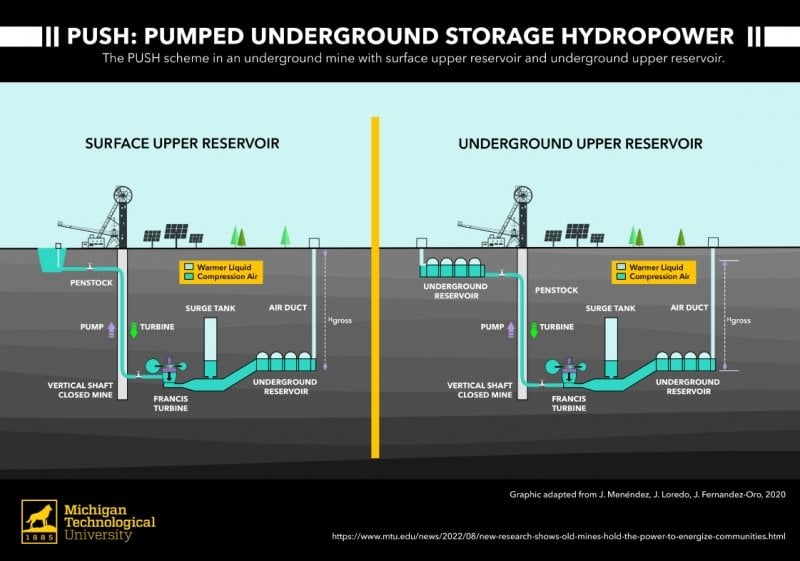
Q: Pumped hydro storage is a mature technology. What’s different about your findings from this study?
RS: The main difference is in the interdisciplinary approach that the team used. Most if not all previous studies known to us were designed by engineers. This study was designed by a team that had engineers in it. The rationale behind the study was not to determine the technical feasibility of PUSH, but to take a holistic look at whether this technological application was a good idea on social, economic, environmental, cultural and legal grounds.
We knew of previous studies that confirmed there were no fundamental technical barriers for developing PUSH. Ultimately, we wanted to know what PUSH could do for decarbonizing the electrical grid and providing economic development opportunities for post-mining communities, as well as the barriers and opportunities for making it happen.
TS: The technology is mature in the sense that humans have centuries of experience with hydropower and decades using it for pumped storage. Mining and drilling are also mature technologies backed by centuries of experience. Combining them together in this way — that is new. People have thought about it, but nobody has yet tried it. Projects are in development around the world — Sweden and Finland, Germany, Australia and South Africa.
Q: You examined the challenges of energy storage from a broad perspective rather than specifically from the purview of an energy company. How does that change the impact for communities?
RS: This is not a conventional approach to assessing an energy project. Normally, a developer shows up in a community and informs it that something is going to get built. The next step is to work with the community on the acceptance of the project. There are normally some concessions and even benefit sharing, but all of it has an expiration date determined by the life of the project. In some cases, this model works and even benefits both the community and company. However, when the company is gone, so are the benefits. Because many potential PUSH sites are owned by municipalities, we saw this as an opportunity for a different approach, where a community can play a significant role in getting what it wants and needs, long-term, out of a PUSH project.

Now Playing: Michigan Tech Research on YouTube
Industrial archaeology expert and Tech faculty member Timothy Scarlett says mines gone bust can boom again in the new energy economy.
TS: We’ve thought about this situation from different perspectives, but my favorite is when we flip traditional thinking. Abandoned mines are nearly always considered liabilities for communities, associated with environmental damage, economic depression, demographic decline and cultural malaise. Instead, we ask, what if we think about these abandoned mines as untapped assets? Think of them as embodied carbon like other existing infrastructure? Ask communities to identify what is important to their members about these places, and consider what part of the mining heritage should be treated with care? What if we can co-design plans that flip liabilities into assets via design?
Q: While the report includes broad, scalable implications, the study extrapolates out from your work with one mine in one community: the Mather B Mine in Negaunee. Why that mine? What kind of feedback did you get from the Negaunee community?
RS: The Upper Peninsula has some of the highest electricity rates in the nation and many post-mining communities. The Mather had the available data and the community, including the energy provider, was open to sharing it. Tim does a good job explaining this, especially from the vantage of industrial archaeology.
TS: We wanted to do a single, detailed study. We wanted the results to be broadly applicable around the United States and the world. So we decided to look at an abandoned mine instead of one that was active and nearing the predicted end of operations. We wanted a mine that was large enough to consider multiple scales, responsive to local needs or aimed at supporting a large power grid. We also thought it would be important to find an example where the heritage of mining was important in the community. Finally, we needed to be able to get a lot of data about the mine and the regional energy grid.
We landed on Negaunee because Michigan Tech researchers had partnered in the past with WPPI Energy, a Wisconsin-based cooperative energy transmission company. WPPI had kindly shared all kinds of grid data with MTU in the past: the detailed and granular business information that most for-profit companies keep private. We realized that WPPI provided service to Negaunee, which also had historical iron mines that ticked off all the other boxes for the project. I researched the historic mines in the community and we went to a meeting with Nate Heffron, city manager, and his staff. When we explained the idea of our project, Nate detailed the cultural significance of the different mines in the area and how people would want us to avoid certain mines. He and his staff pointed us to the Mather B. It was the perfect place to start.
Q: This is more than an energy-storage initiative. Tell us how it speaks to the character, culture and needs of post-mining communities where the remnants of former operations are historic artifacts and may also be eyesores and hazards.
RS: People want to be proud of the places where they are born and where they live. We heard over and over again from older folks about how wonderful it would be if mines were put to good use again. Younger people remarked about how much they love the U.P., how they would like to stay and raise their families here if there are economic opportunities present. PUSH can do both and different generations can be proud of what mines have done and would continue doing for the country and the world.
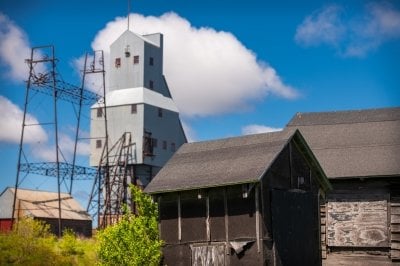
TS: Throughout Michigan’s Upper Peninsula, mining is important to the heritage of communities. People in the Copper Country talk about our geoheritage — the way that the lake, the basalt bluffs and the copper shaped our lives. The same is true in Michigan’s iron ranges. When visitors come to the Keweenaw, people take them to the Quincy Mine or another of the old mine sites. In Negaunee and Ishpeming, they visit the Cliffs Shaft Museum or the Michigan Iron Industry Museum, or the Iron Mining Museum in Iron Mountain. School groups tour the mines to learn about our heritage. Families travel from all over to visit the mines and elders teach their children family history. Rock hunters come to walk the poor rock piles to find minerals. Landowners and organizations operate these mines as different kinds of heritage sites, experimenting with formal educational programs in collaboration with the National Park Service, or as adventure and ecotourism destinations, or as entirely self-guided discovery sites with no formal programming. The mines are also bat habitat and greenspace. People take their ATVs out to Gay to tear around the stamp sands. People do these things in many of the post-mining regions of the world. Many of those places suffer far greater ecological contamination than we have in Michigan, particularly from mill tailings.
So on the one hand, abandoned mines always present problems. There are ecological challenges with water quality and mill waste. Slumping ground or abandoned industrial buildings present challenges for human health and safety. Post-mining communities often suffer from demographic decline and economic recessions. When boom shifts to bust, the cultural impacts are painful and people struggle with blight. At the same time, many scholars identify the strong sense of place in mining communities: hardscrabble people and hard landscapes, labor struggle and difficult work, and ever-present sacrifice.
Some people see the earth slowly reclaiming scars, others see the sweat and toil of their ancestors, some remember struggle and the loss of displacement while others see refuge in “God’s Country.” Yet more have other visions for post-mining places.
"These places matter to people. They are not wastelands. They are not abandoned. They matter."
So, can we use PUSH as an opportunity to listen to all these groups of people and find what they value in these places? Help them find shared values and discover how (and if) an energy storage project can meet the needs of our evolving energy infrastructure while also reinforcing those things that people value in these places? Many of these communities continue to pay the costs of industrial wealth production, though they no longer reap benefits from its extraction. Can PUSH systems change that dynamic and allow these communities to use the mines as a focal point to recenter the landscape of energy production, distribution and consumption while also supporting other heritage uses of the landscape?
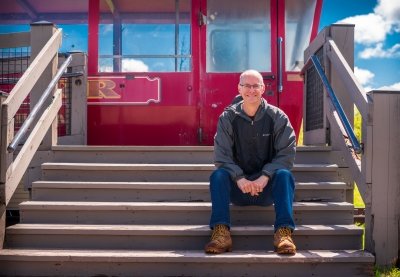
Q: You narrowed the criteria to exclude nonmetallic mines. Why? Does that mean other kinds of mines aren’t suitable?
RS: This remains to be seen, but why not go after the best resource available? If the United States had supergiant oil and natural gas fields like Saudi Arabia and Qatar, we might have never seen hydraulic fracturing and horizontal drilling be so prevalent in the country.
TS: We wanted to do our first study of a mine that was entirely underground because we were imagining a facility that was self-contained, meaning it wasn’t drawing water from or discharging into natural lakes, streams or other waterways. Designing that type of system requires that the geology be solid to support the weight of the rock and water. Some types of mine ore, such as coal, are notoriously unstable because of the mineralogy of the ore and the types of rocks commonly found with the ore. So in our large study, we excluded mine types and ore types commonly associated with unstable undergrounds.

Now Playing: Michigan Tech Research on YouTube
Old energy policies out. Energy transition in. Tech faculty member and energy policy expert Roman Sidortsov says harnessing a resource we already have — mines that can store energy to use as needed — can help propel new power security and stability around the world.
Keep in mind that the United States Geological Survey data includes all kinds of things extracted in economic geology: coal mines, quarries for gravel, clay and sand pits, salt, etc., as well as mine types like open-pit or those commonly known as “mountain-top removal” mines. There are other types of energy storage systems that might function in mines like those, but they are technologies that are still under development. We wanted to be able to tell people, “We have been very conservative, but this is the number of mines we think could work for this type of facility.”
30,000
(PUSH study findings)
1,000
(PUSH study findings)
Q: One of the major questions is how dewatering and potential wastewater contamination would be handled. How does the report address this scenario?
RS: Our water testing did not show any major concerns, but we were limited in the depth we were able to reach. Both mine water treatment and mine dewatering is something that mining companies do all the time. Like with pumped storage hydro, no new technologies are necessary to get the job done.
TS: It is important to remember that if a mine is filled with polluted water, that water already exists and is in the environment. The abandoned mine is already exchanging water with the local groundwater, or draining into surface waters. Because the mine is sealed off at the surface does not mean the pollution will go away. The key question is, “If we start pumping this water around, will this make the water quality worse?” That question needs more research.
Now we know that a PUSH facility could be profitable, operating to store and resell energy and providing grid services. So once the PUSH facility is built and operating, what would it cost to add a water treatment system to the facility? If the site is established as a sustainable, long-term revenue-generating utility, there will be ways to sustainably treat the water. Perhaps the facility’s operator could use regular tax incentives to offset water treatment costs and improve the water quality in the mine, for example.
Could the utility operator also operate a reclamation system to recover the valuable metals dissolved in the warm mine water? The facility is already pumping the water around and making money. What is the marginal cost of adding a reclamation system to the process? Mines commonly recapture minerals from aqueous solutions. And while thinking about that, what about the heat energy? What would the marginal cost be of adding a geothermal heat pump or binary cycle power generator to the system? Could you harvest the minerals and the thermal energy as valuable materials?
"We know how to treat mine water. In 2019 the Environmental Protection Agency approved discharges of treated water from Anaconda’s old Berkeley Pit in Butte, Montana. The Berkeley Pit is among the most toxic and polluted mine water in the world. It is not a question of whether or not the water can be treated, it is only a question of who will pay for it."
An operating utility or industrial facility using a formerly abandoned mine provides a tenant who will keep an eye on abandoned mine remains, water quality, old impoundments and so on.
Q: About $5 million in federal funding was initially set aside for mine remediation
programs. Billions of dollars more have since been aimed at these issues, including
$9 billion for energy transition and climate in the 2022 White House budget. How do
you see the PUSH initiative fitting in?
RS: Very well. What can these facilities do for these particular communities to make
sure damage is remediated? If you already have a place where these facilities can
work, there’s no need to put more holes in the ground. Also, siting an electricity
storage system in a place that was used for industrial purposes means that another
“greenfield” site — one that has not been developed — can be left alone, avoiding
environmental damage.
TS: The Infrastructure Investment and Jobs Act put aside $3 billion for abandoned hardrock mine reclamation projects. President Biden’s proposal for the 2023 fiscal year budget includes programs in energy development and former mine land remediations. Agencies are looking for plans for integrated solutions that mix reclamation design, greenspace expansion and renewable energy development. We could design such projects around an underground PUSH system and begin converting former mine lands into reclaimed landscapes that produce sustainable, carbon-neutral energy and provide it to the grid with long-duration storage built in. No need for more batteries and more mines to make them.
Q: Aesthetic, environmental and community concerns about energy infrastructure development figured hugely in this research. Tim, you’ve said old mines matter to people. They’re a heritage resource. How did that factor into the research?
RS: Aesthetic concerns are what killed many conventional pumped storage projects in the past. Putting an industrial-looking facility on a mountainside is off-putting to many. No such concerns exist if the facility is inside a mine.
TS: These concerns were foundational to our approach and we had many expectations about those concerns. But for this study, we tried to imagine a PUSH system at its most basic. Could a private developer build a PUSH system in the Mather Mine in Negaunee and make money? Now that we have insight on that, we can explore variations. We have this pre-feasibility study that people in government and industry can sink their teeth into, that current- and post-mining communities and other interest groups can consider. Now we have a framework around which we can really talk about tangible pluses and minuses, advantages and disadvantages. This example shows that it is worth making more serious investments in PUSH solutions. It will be worthwhile for organizations and individuals to put the time and energy into relationships and collaborations among regulators, investors, municipal staff, community organizers and consumers.
Q: What and who do you hope this report will inspire? What are the next steps they can take?
RS: As an energy scholar, I hope to see a paradigm shift in the way we make decisions about energy. Let’s ask what energy is for, and where and how it is made.
"If we need a quarter, let’s look under the couch first before building a mint. In the case of PUSH, we might find enough ‘quarters’ to help power the world for a long time."
TS: I hope we can develop more partnerships so Michigan Tech can facilitate more of these studies — much more could be done. There are a series of emerging energy and environmental technologies that could be designed into PUSH facilities to make them even more profitable or valuable or extend the benefits a facility would create: direct geothermal HVAC, binary-cycle geothermal electric power, carbon capture, superdense fluid-based PUSH, hydrometallurgical extraction and mineral recovery and so on. I hope we can start thinking about abandoned mines ecologically, really embracing circular design, and shifting mining away as far as possible from naked extraction, instead making it a part of developing sustainable and fair energy systems for resilient communities.
Q: How does your work on this continue?
RS: I would like to keep going “deep” and “wide,” mapping more sites in the U.S. and worldwide, developing frameworks for comprehensive assessments. We have a couple of pending grant applications that we hope will enable us to do so. This idea is too valuable and too promising to not continue.

TS: I’m excited to talk with residents from other post-mining communities — their civic and municipal leaders, teachers and students, and others living with mining legacies. This is a rare moment in time where communities can choose to leverage their liabilities as assets. Local residents and community organizations have information of value to planners and designers during the energy transition. I want these communities to understand PUSH and related technologies as potential problem-solving opportunities, appreciate the value of the information they have about their heritage, conduct their own heritage assessments and build consensus about potential projects, and understand how to use existing policy and regulatory processes in their favor. I’d like to send teams of PUSH-project students to visit communities, engaging them in their homes and landscapes. I’d also like to bring people from mining communities here to Michigan Tech and the Copper Country, such as groups of high school teachers and students, so they can learn about PUSH and see examples of how others have converted heritage mines into sustainable assets in our communities. When they get home, they’d become leaders for conversations about processes of sustainable design, helping people do their own pre-feasibility studies and building social consensus about the future. The energy transition is a once-in-a-generation opportunity to get things right. I want to help with one part of that.
Michigan Technological University is an R1 public research university founded in 1885 in Houghton, and is home to nearly 7,500 students from more than 60 countries around the world. Consistently ranked among the best universities in the country for return on investment, Michigan's flagship technological university offers more than 185 undergraduate and graduate degree programs in science and technology, engineering, computing, forestry, business, health professions, humanities, mathematics, social sciences, and the arts. The rural campus is situated just miles from Lake Superior in Michigan's Upper Peninsula, offering year-round opportunities for outdoor adventure.
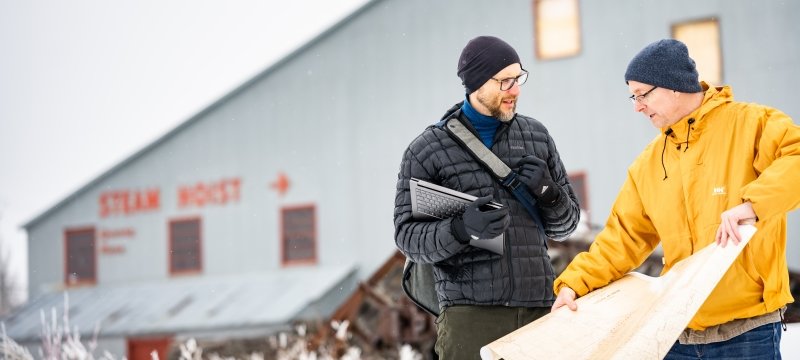
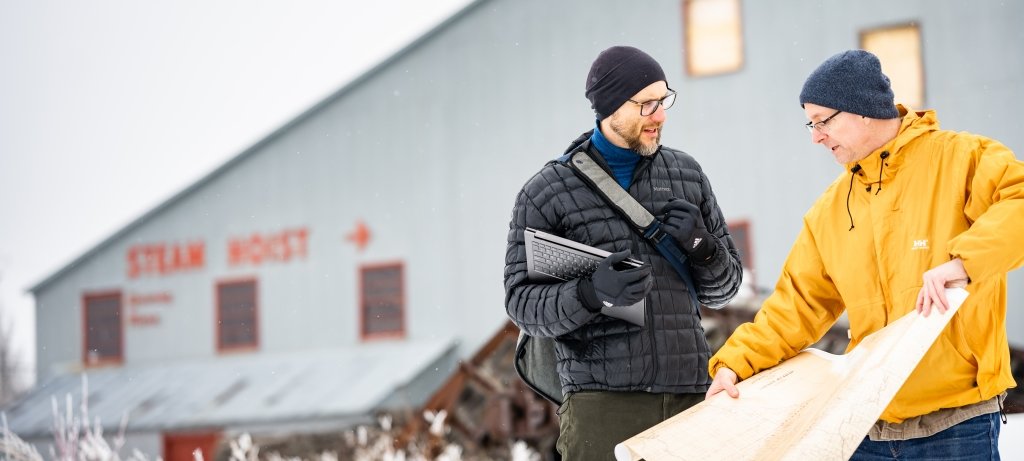
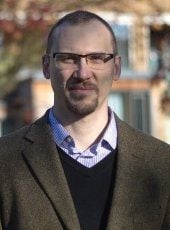


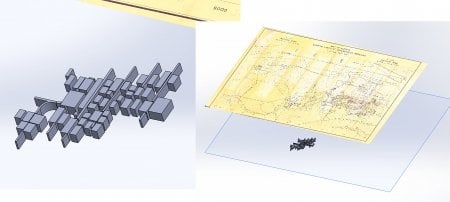
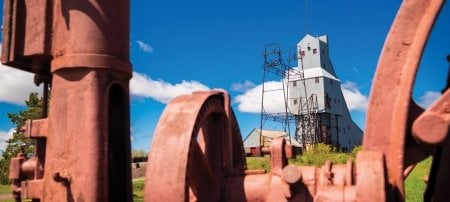

Comments